Oppo A9 2020 Review
Oppo A9 2020 Review
This affordable Android offers an end to battery anxiety
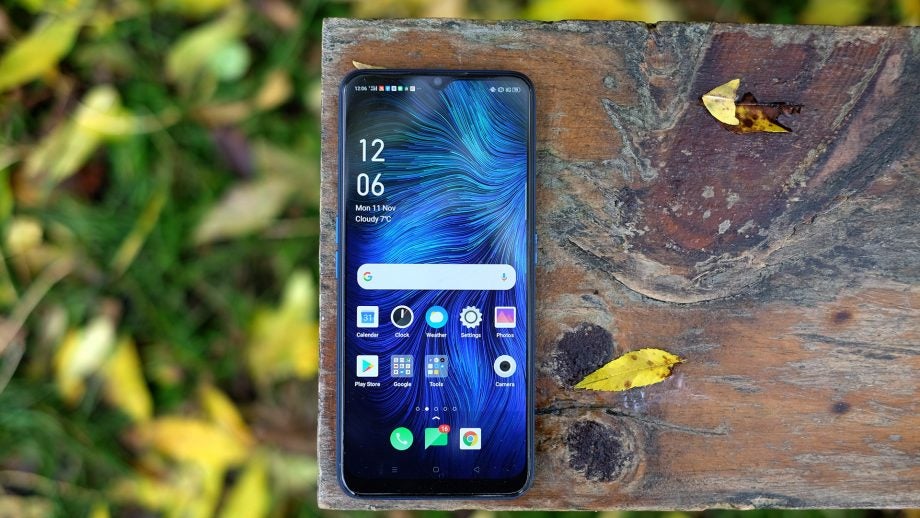
Verdict
The Oppo A9 2020 is not the most impressive phone around on paper. It has a 720p screen and costs more than the Xiaomi Redmi Note 7, which has a 1080p display. Only two of its four rear cameras are useful too, but two solid cameras at £220 isn’t bad. However, the screen is surprisingly decent-looking and there’s a good chance you’ll fall in love with the Oppo A9 2020’s battery life – I did.
Pros
- Killer battery life
- Large screen
- Dual field of view camera
Cons
- Low screen resolution
- Glass-look back is plastic
- Two of the four rear cameras don't do much
Key Specifications
- Review Price: £219
- Snapdragon 655 CPU
- 4GB RAM
- 128GB storage
- 48/8/2/2MP rear cameras
- 16-megapixel front camera
- Rear fingerprint scanner
- 1600 x 720 pixel 6.5-inch LCD screen
The Oppo A9 2020 stands out among the best phones around £200 when you actually live with it, more than it does on paper. To accept its strengths you need to come to terms with one key weakness.
It has a 720p screen, and I usually expect to see a 1080p display on the best cheap phones. However, the effect is less pronounced than I expected, and is offset by the size of the display. I’d rather watch a 15-minute YouTube video on the Oppo A9 2020 than a phone with a more advanced 5.5-inch screen.
Some of you may still be put off, and that’s fine when there are several very strong alternatives, but everyone can appreciate the Oppo A9 2020’s battery life, which is sensational. This alone makes it one of the lowest-maintenance phones I’ve used in the last five years.
I wouldn’t hesitate to recommend this phone, even though there is a stack of little complaints to note. Read on to find out if one might really get on your nerves.
Oppo A9 2020 Design
The Oppo A9 2020 is a lower-end cousin of the Oppo Reno 2Z. Both have large screens and curved rears, but this phone has a plastic back instead of a glass one.
This is an unfortunate trend around this price. A couple of years ago you had several great glassy options hovering around £200. But nowadays more Huawei, Honor and Motorola phones use plastic, to lower production costs and create a greater separation between cheap and mid-range models.
I’ve used the Oppo A9 2020 for a few weeks now, and the Reno 2 I tried earlier this year has been sat on my sofa at home. Every now and then I’ve picked it up, and it’s a reminder the A9 really doesn’t feel like a high-end phone.
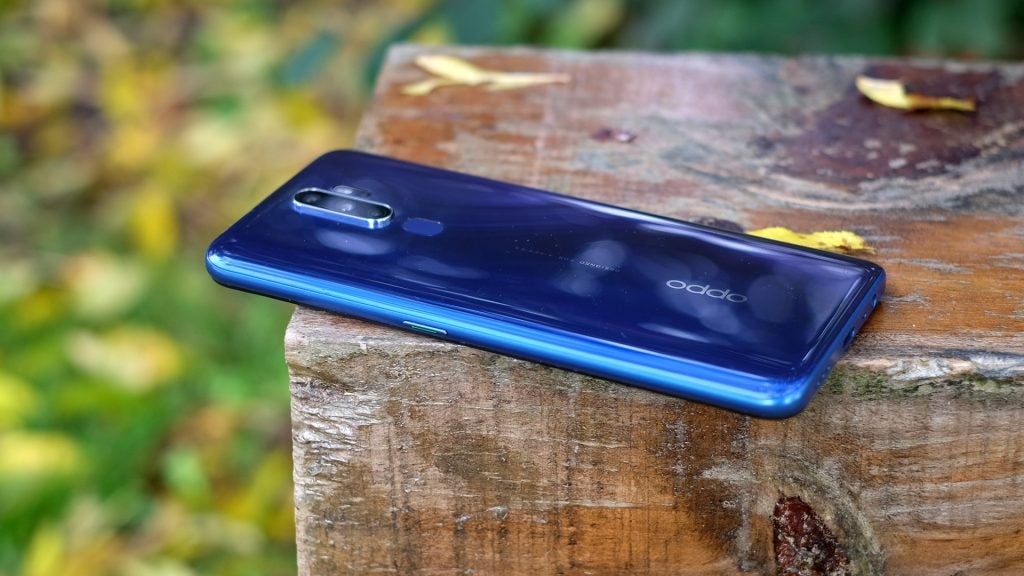
The rear plastic doesn’t have the cool and hard touch of glass, and the phone itself seems less dense as a result. However, when not accidentally comparing the Oppo A9 2020 to its twice-the-price sibling, it’s not a major issue.
This phone looks good, with a blue-purple light reactive finish and the kind of scale you’d associate with a top-end phone. Its back has picked up a few nicks already, so you may want to use a case. Oppo includes one, but it’s not great. It handles the protection part just fine, but makes the side buttons feels spongy.
To clean up some of the Oppo A9 2020 build basics: this phone is not water resistant, and while it is mostly plastic, the side buttons are metal and have a satisfying click. This may sound like a minuscule point, but does help make it feel less cheap than some bottom-rung plastic phones.
Oppo also fits a screen protector in the factory. There are no bubbles, and no sign of it lifting off at the sides, several weeks in.
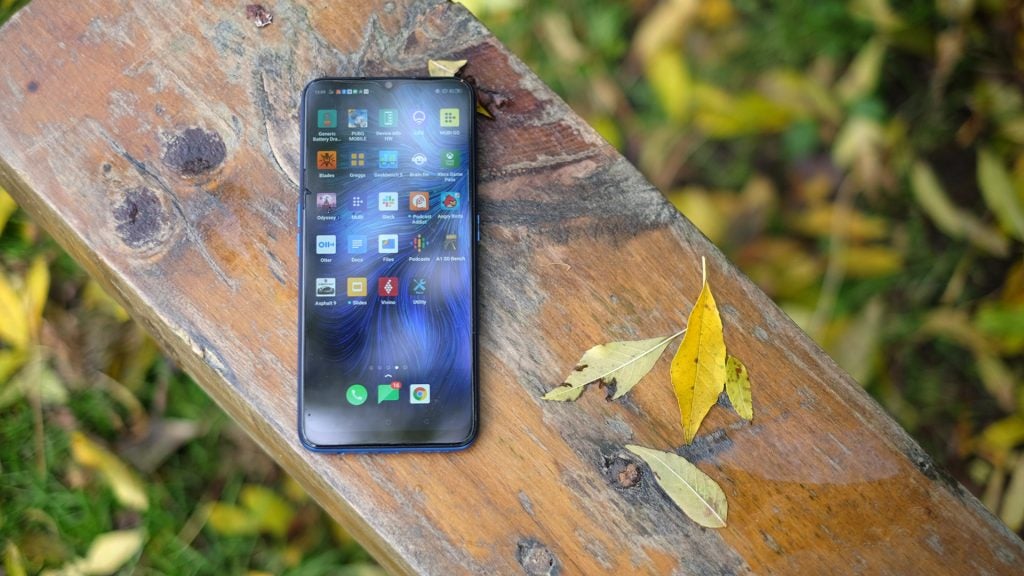
Do bear the Oppo A9 2020’s size in mind. This is fairly large phone. A big screen demands a bigger footprint and it’s relatively thick, as Oppo prioritised battery life over minimising thickness.
I’ve had zero issues with the size but don’t buy this if you’ve used and disliked large phones. Oppo has added a “one-handed” feature in the software, which lets you load favourite apps from the side of the screen with a thumb. But I find it fiddly rather than particularly useful.
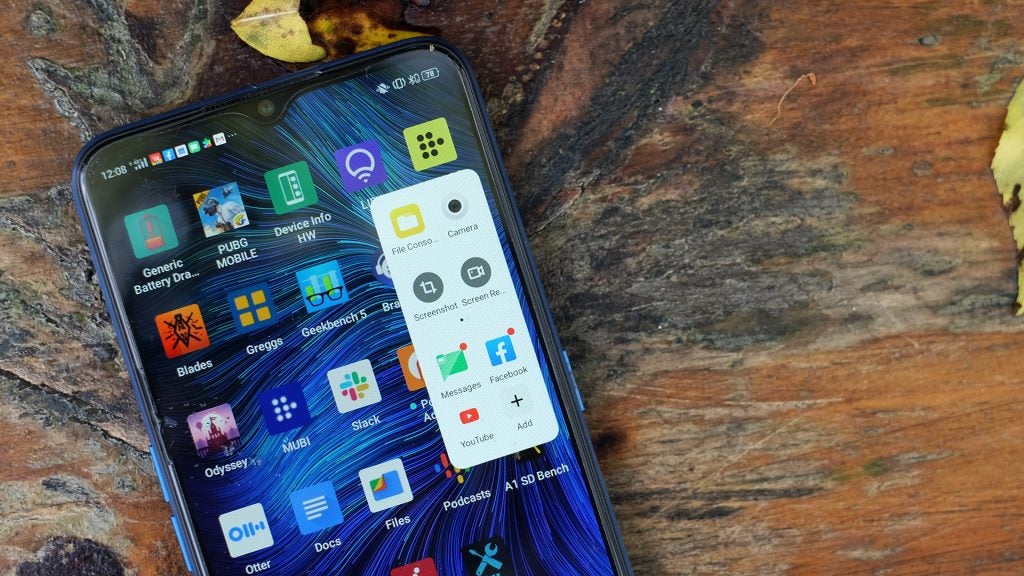
The Oppo A9 2020’s hardware extras are solid. It has a fast rear fingerprint scanner rather than an in-screen one like the Reno phones and stereo speakers. These are better than I expected, with good volume, decent stereo projection and tone that holds up just fine even at maximum volume.
I used the Pixel 4XL before this phone, and there’s usually a huge drop in sound quality when switching “leagues” like this. However, the Oppo A9 2020 holds up just fine, but predictably has less bass and mid-range richness than some pricier phones.
Oppo A9 2020 Screen
The screen is the thorniest part of the Oppo A9 2020. It is the part that appears to let the phone down, with a relatively low-resolution 1600 x 720 pixel panel in what is a very large 6.5-inch screen.
We’d all prefer a 1080p screen here, just like many would prefer a glass back. But I am flat-out surprised by how little the image seems compromised, particularly as someone who complained about larger-screen 720p phones regularly half a decade ago.
These panels seem to have reached the point at which you can’t really see the pixel structure, despite the relatively low pixel density. One of the most grating signs of a lower pixels-per-inch is seeing a very fine black grid, the gaps between the sub-pixel clusters.
There’s none of that in the Oppo A9 2020, and Google’s scaling of fonts and other objects in screens like this is radically better than it used to be. As a professionally techie, I feel I should dislike this screen. But I simply don’t.
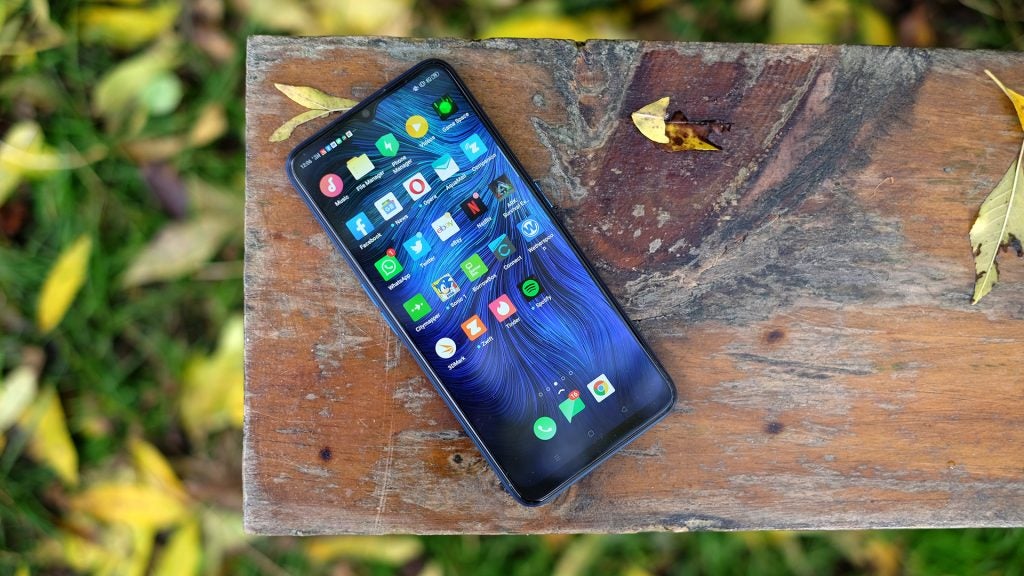
The text scaling quality does vary a bit by app, though. In the ColorOS UI and Chrome it’s excellent. Twitter’s is not as strong, and makes the lower pixel density more obvious.
Its generous size is also great for video streaming, particularly when you consider the majority of Android phones only stream Netflix at 720p anyway (and some are limited to 540p).
YouTube is better at exposing its limits. The Oppo A9 2020 doesn’t support HDR, and naturally cannot play videos at resolutions beyond 720p. Motorola’s Moto G8 Plus can, for a little more money, as can the slightly cheaper Xiaomi Redmi Note 7. That’s a phone of such ridiculously good value it’s almost unfair to the competition.
I’d give the Oppo A9 2020’s colour reproduction a solid “B” grade. There’s the slight undersaturation common to budget LCD screens, and fresh out of the box the colour temperature was too cool. You can change the temperature in Settings, but not the saturation. My guess is the default mode already makes use of the panel’s capabilities.
The screen also has a swooping notch, with less severe lines than the Moto G8 Plus or Xiaomi Remi Note 7. There’s no option to block it off, potentially because the notifications bar actually dips a handful of pixels below the notch itself. Or, to go with the Occam’s Razor approach, cheaper phones tend to have fewer tweaks like this and customisable colour modes.
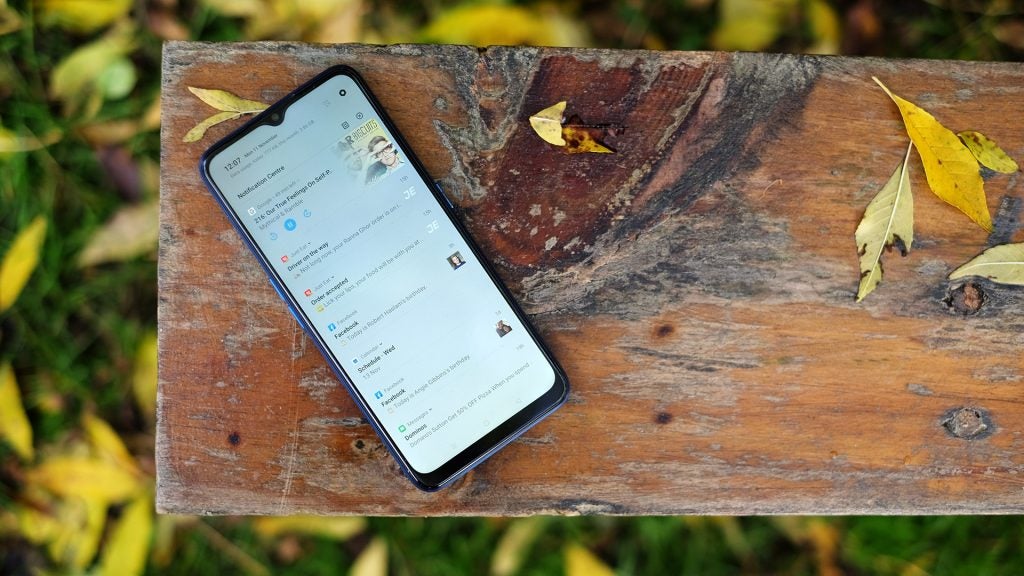
Oppo A9 2020 Software
Oppo’s A9 2020 runs Android 9 with ColorOS 6.1 interface on top. Its square icons were the first thing I noticed when I started using Oppo phones regularly again, with the Oppo Reno 2 and Reno 2Z.
I wasn’t a fan and initially found the look stiff. You may be able to change this in outside the EU too, as some other territories’ versions have a “themes store” app. In the UK you just get five preinstalled themes that barely change anything but the wallpaper and the look of a few core app icons.
However, a few weeks in I’m perfectly happy living with ColorOS. You can choose the number of rows and columns of icons in both the app drawer and homescrens, handy for a large-screen phone. And the app drawer itself is optional.
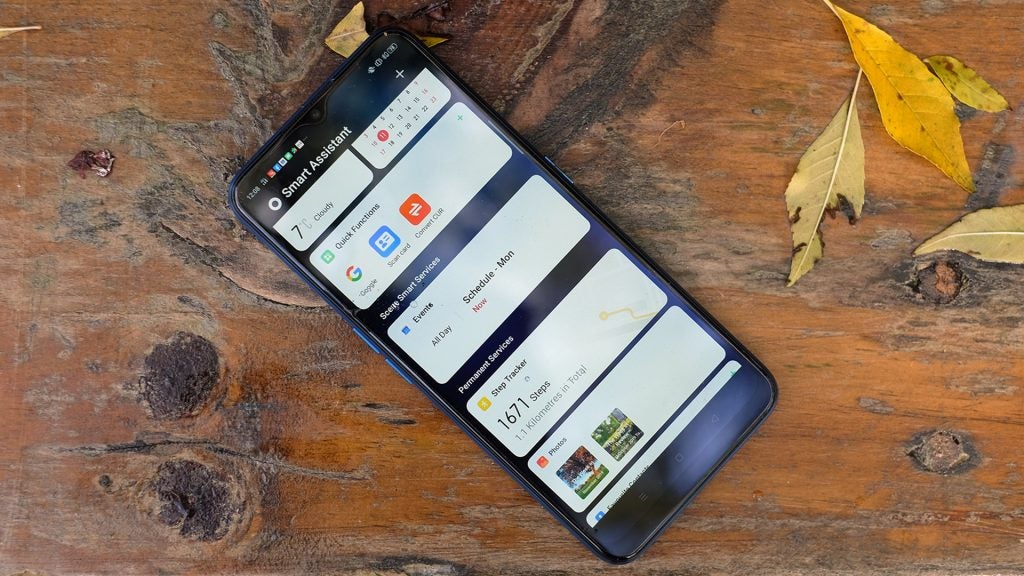
It also has a one-handed feature, mentioned earlier, but I don’t find this particular useful. The Oppo A9 2020 adds a homescreen too, Smart Assistant. This is a page of widget-like panels, home to info like the weather, a calendar view and a pane of app shortcuts. I’ve only found it useful as a way to quickly check my step count for the day, but then I have never found any of these home screen feeds particularly desirable. You can turn Smart Assistant off if you like.
I can’t recall bumping into any ColorOS related bugs in my time with the Oppo A9 2020. This phone doesn’t have the best software in the Android universe, but at this point I’d pick ColorOS over the LG G8X ThinQ’s UI.
Oppo A9 2020 Performance
The Oppo A9 2020 has a Snapdragon 665 processor. It has eight cores. Four are Kryo 260 Gold cores, comparable to Cortex-A73s. The other four are Kryo 260 Silvers, similar to Cortex-A53s.
This is the same CPU used in the Moto G8 Plus. The rival Xiaomi Redmi Note 7 has the older Snapdragon 660, but it’s not the wholesale upgrade the model numbers suggest.
The Snapdragon 660 has better fast charge standard support (QuickCharge 4.0 vs 3.0) and in some tests its Adreno 512 graphics chipset seems to outperform the Oppo A9 2020’s Adreno 610. There’s little to separate the two in terms of what will affect you day-to-day. And that’s a win for the cheaper Redmi Note 7.
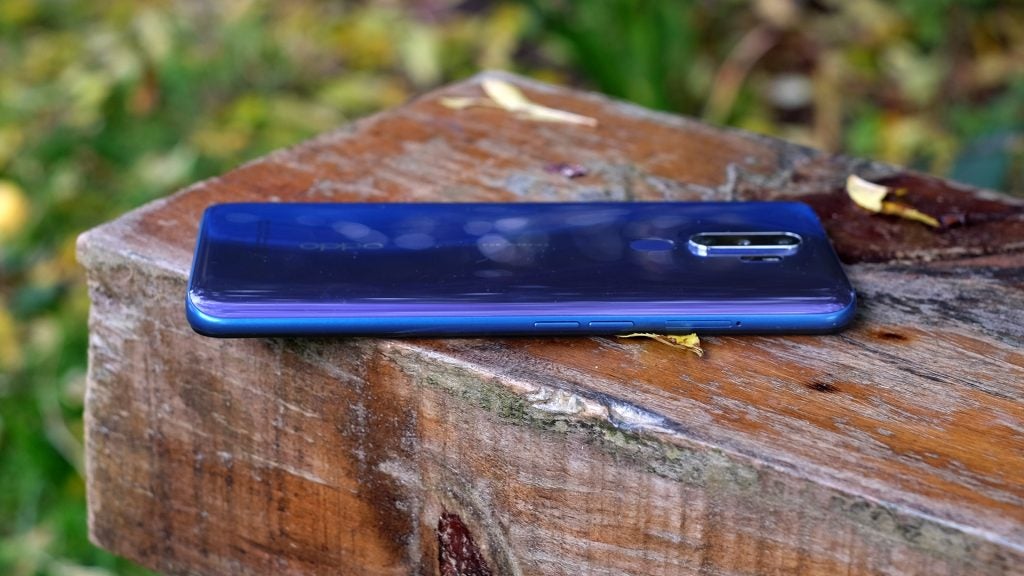
Games run exactly as I’d expect for a phone in this class. The Oppo A9 2020 can play anything, and supports the Vulkan API required for a few high-end titles. However, you will need to cut back the graphics a little in some to see smooth results.
ARK: Survival Evolved is too choppy at “Epic” graphics with the resolution slider maxed-out. I’d be surprised if it wasn’t. If you want peak performance in games, look for one of the affordable phones with an 8-series Snapdragon CPU, like the Xiaomi Mi 9T Pro or the older Pocofone F1, again from Xiaomi.
This tells you a lot about Xiaomi’s strategy. Its expansion into the West is fuelled by high-spec, low price phones. Oppo’s approach is more measured.
Oppo A9 2020 Camera
Did we say measured? That doesn’t quite apply to the cameras. The Oppo A9 2020 has four rear cameras. Two of them are useful, two seem to be almost entirely useless based on my testing. It’s hard enough to even track down what Oppo seems to think the other two do.
These extra cams have 2-megapixel sensors and have a hand in background blurred Portrait images and black and white photography.
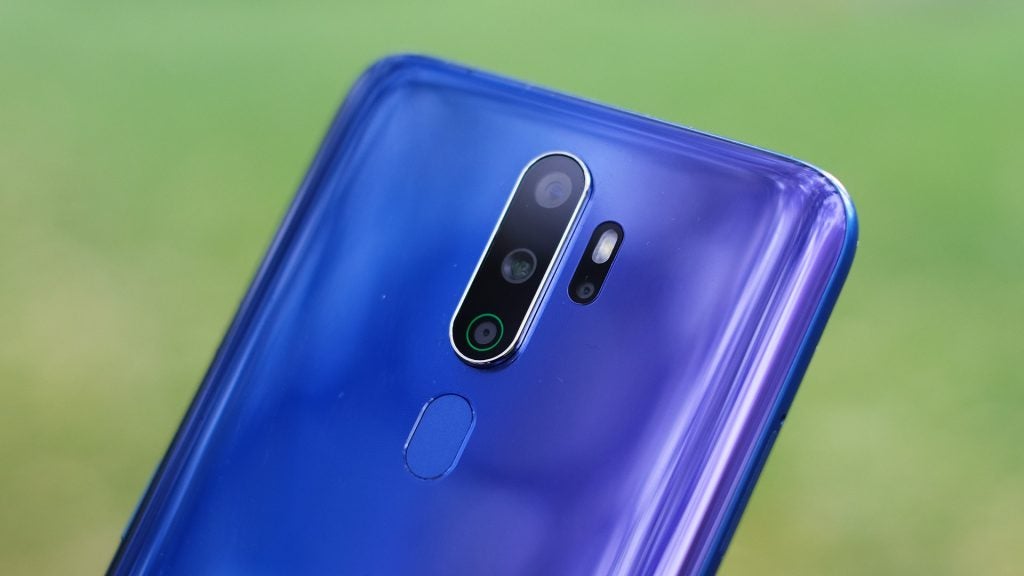
My main issue is you can use the B&W mode and the Portrait mode with both the 2-megapixel cameras covered, with no obvious hit to image quality or the subject extraction in portraits. At best these extra cameras may speed up these modes slightly, but their main role is clearly to bulk up the spec list and make the Oppo A9 2020 seem more advanced than it actually is.
I have the same issues with the Portrait mode as those I saw in the Reno 2. Its cut-out algorithms are excellent, better than the iPhone 11’s or Pixel 4’s, but it’s so picky about the distance between the phone and your subject the blurring simply doesn’t kick in a lot of the time.
It’s a shame a mode this solid should see so little use.
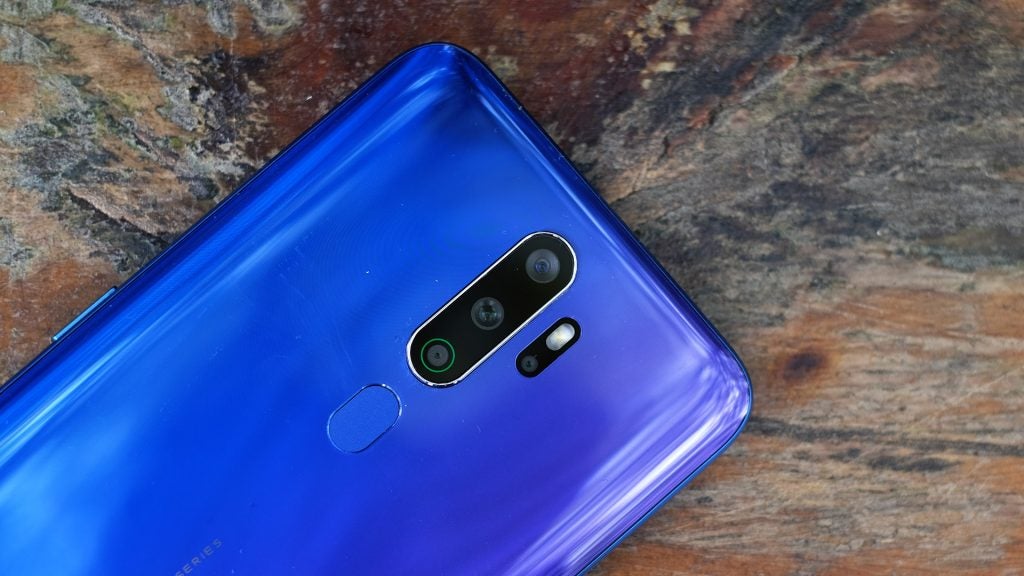
The B&W mode is also fluff. It’s simply one of the filters in the app that most people ignore, choosing instead to add such processing when they upload to Instagram.
This is not a good quad camera array. But the number of cameras in a phone has become the new depressing way phones compete with each other, often without much substance to back them up.
Thankfully, there’s a lot to like about the Oppo A9 2020’s two primary cameras. One offers a standard view, and reportedly uses the 48-megapixel Samsung GM1 sensor. It’s likely cheaper than the more popular Sony IMX586, but still has solid credentials including 1/2-inch sensor size and the usual pixel binning to create “virtual” 1.6 micron sensor pixels.
The Oppo A9 2020’s second camera is an 8-megapixel ultra-wide.
Let’s start with the good parts. The choice of two fields of view is always welcome, and it makes street photography more fun. You can also zoom in to 2x and 5x views, but as there’s no actual zoom camera only the 2x is worth using. 5x images look horrible.
Detail of the main camera’s images is very good for a £200-ish phone, shutter lag is a consistent and not-too-annoying (roughly) 1/3 of a second. And there’s solid dynamic range enhancement in virtually all of your photos when you use the Auto HDR mode, enabled as standard.
If you find your shots look dull, you can also turn on Dazzle Color. This offers the kind of poppy-looking effect the first waves of “AI photography” offered, completely with seriously hyped colour, but sometimes great British afternoons need drastic measures.

I’m most impressed by the Oppo A9 2020’s night mode. This uses the same kinds of techniques as today’s high-end phones, taking several seconds and several exposures to improve night images.
It takes seven seconds, which now seems uncomfortably long, but radically improves detail and clarity in very low-lit scenes. What looks like mush in Auto mode is reasonably sharp in Night mode. It’s one of the biggest leaps in straight detail I’ve seen in such a mode recently.
However, the Oppo A9 2020’s night mode images aren’t as detailed or clean as the Pixel 3A’s or Huawei Mate 30 Pro, but both of those are in different classes price-wise.

Ready for the gripes? Part of the review process involves looking through all the photos I take with a phone and seeing which ones I should include or analyse. Far too many of the pics I was drawn to were taken with the wide camera. Part of this is about composition. Wide shots tend to look more unusual, and therefore more interesting.
However, the Oppo A9 2020’s wide camera also takes warmer-looking images and, bizarrely, the Auto HDR mode lifts the shadows more than it does in the main camera.
You can tweak these parts in the edit, and the primary camera’s photos stand up to scrutiny much better. Wide shots in tricky conditions can look a little milky in the shadows, for example. However, it seems unusual the Oppo A9 2020’s secondary camera takes images with more immediate charm.
The Oppo A9 2020 camera also refuses to take a photo if you are touching another part of the screen. It can get seriously annoying if you’re holding the phone at an awkward angle and your palm ends up touching part of it. The shutter button just refuses to fire.
It’s best to think of the Oppo A9 2020 as a dual rear camera phone, as the other two do not appear to add much at all. However, I’m still very happy with the performance here. This is a surprisingly flexible camera. Here are some photos taken with the phone:
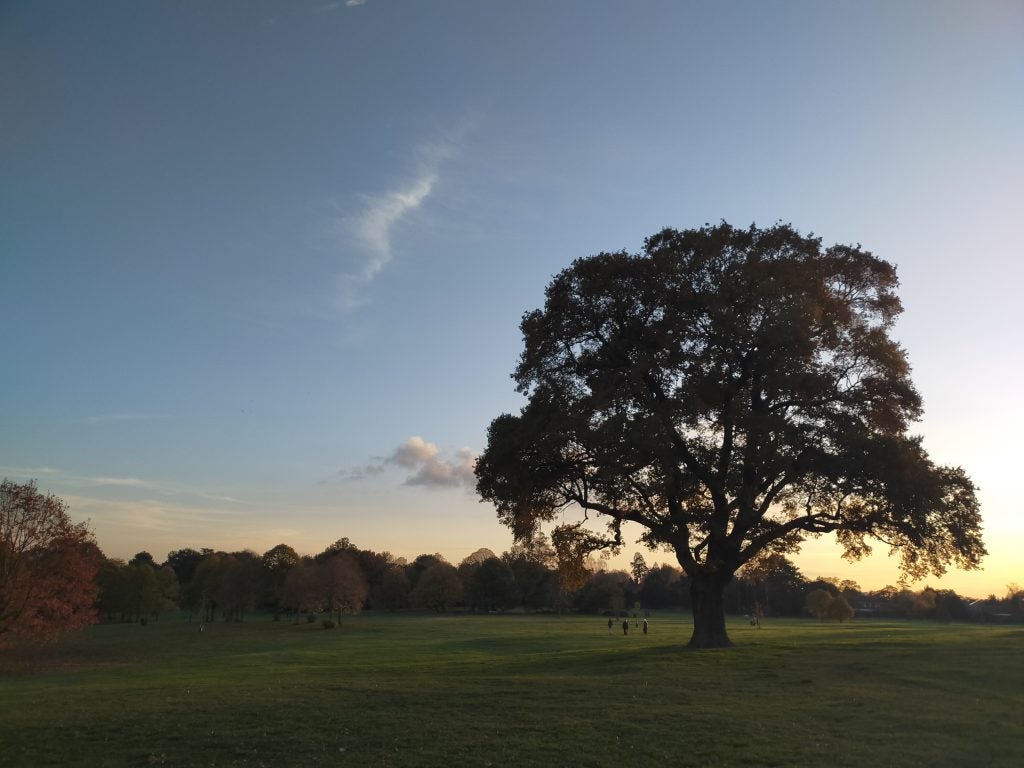



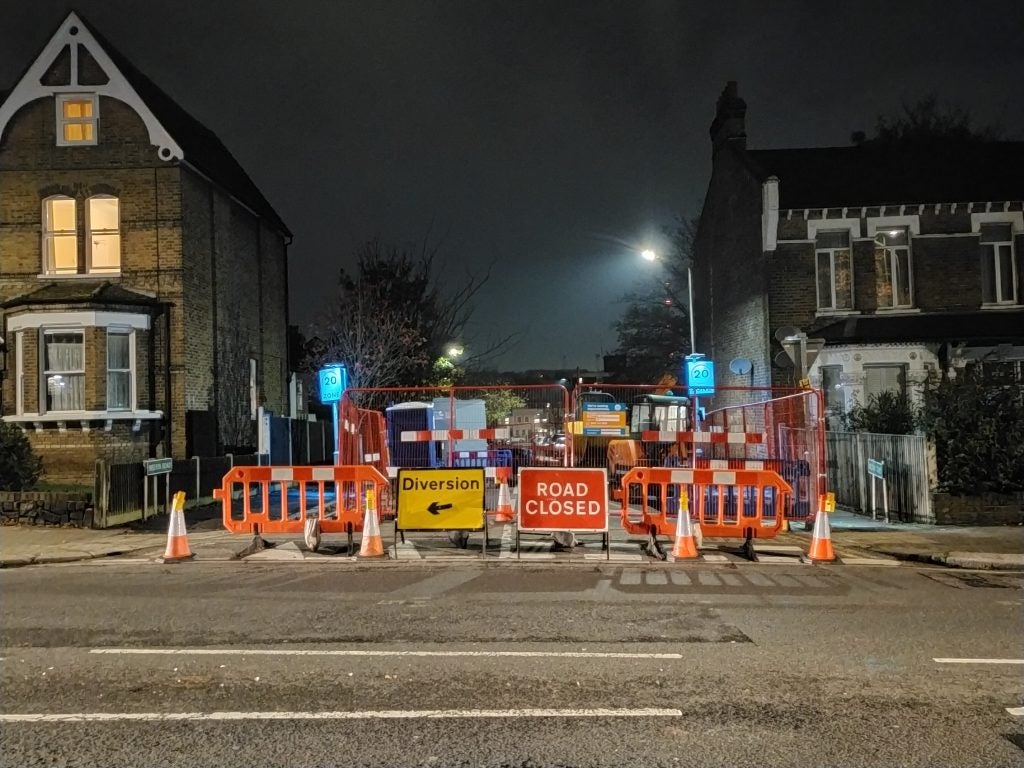





Video is perhaps less impressive. You can shoot at up to 4K, 30 frames per seconds, but electronic stabilisation is only available at up to 1080p. This makes motion look much less shaky, and is a must if you take video doing anything but standing still.
The Oppo A9 2020’s front camera has a 16-megapixel sensor, a fairly good one too. It can capture a lot of fine detail in indoors lighting. And if there’s a bit too much detail for your tastes you can use Oppo’s “AI beautification”. This offers eight sliders that give you virtual plastic surgery. They might as well be called botox, rhinoplasty, chin chiselling, lipsuction and so on. But in bad lighting, we can all do with a bit of face smoothing.
Oppo A9 2020 Battery Life
The Oppo A9 2020 has terrific battery life. It’s easily my favourite part of the phone. And there’s a real difference between big battery 4000mAh phones and this one, which has a 5000mAh battery.
All those moments of battery anxiety that make you consider the battery level before you leave the house are gone. On many days I’m left with more than 50% by midnight. I’ve gone to bed with over 60% on a few occasions.
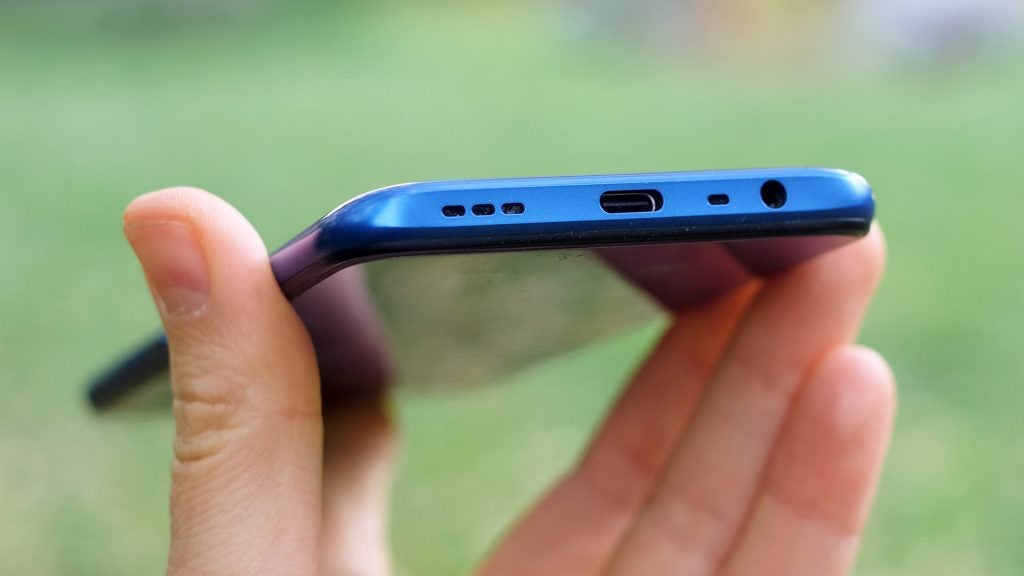
Not once have I had to give the phone a quick top-up, even on days when I’ve given in to distraction and ended up watching some YouTube on my phone when I should really have been working.
This is one of the longest-lasting phones I’ve used in years, and it easily eclipses all the £800-1000 models I’ve tried recently. Top-end phones have to prioritise design in a way Oppo hasn’t here. The difference is only a millimetre or so of thickness, but the Oppo A9 2020 shows what you can get when you give that up.
The phone is not particularly fast to charge, though. It takes three hours using the standard charger.
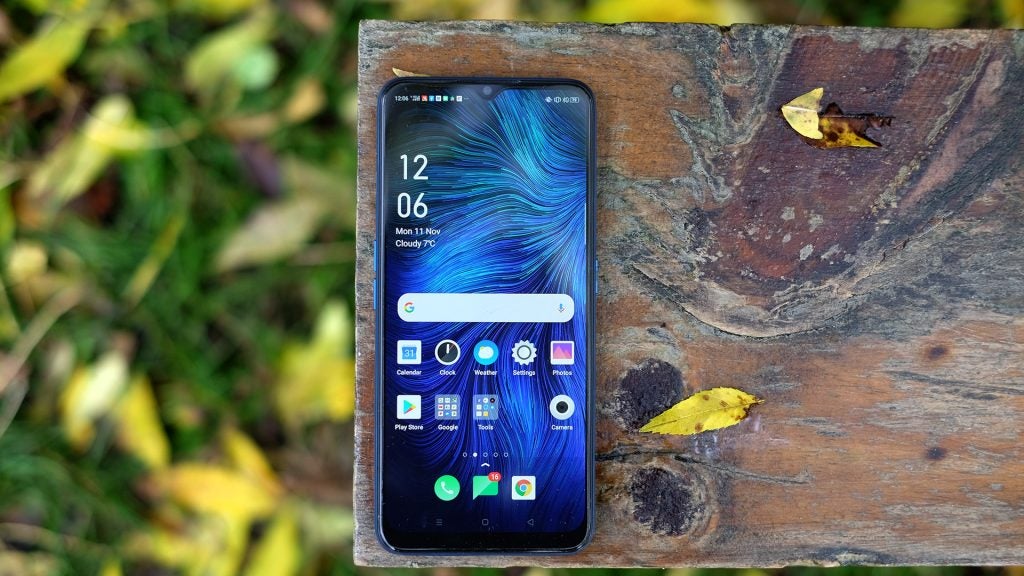
Should you buy the Oppo A9 2020?
The Oppo A9 2020 is not the most impressive phone around on paper. It has a 720p screen and costs more than the Xiaomi Redmi Note 7, which has a 1080p display.
Only two of its four rear cameras are useful too, but two solid cameras at £220 isn’t bad.
There’s a good chance you’ll fall in love with the Oppo A9 2020’s battery life, though. I did. In a few days I’m going to have to switch to a phone that won’t last nearly as long.
Reviewing phones, you rarely end up missing them after they’re gone. But I’ll miss the Oppo A9 2020, primarily for its ultra-marathon style battery life, but also its solid speakers and large, surprisingly decent-looking screen.
How we test phones
We test every mobile phone we review thoroughly. We use industry standard tests to compare features properly and we use the phone as our main device over the review period. We’ll always tell you what we find and we never, ever, accept money to review a product.


